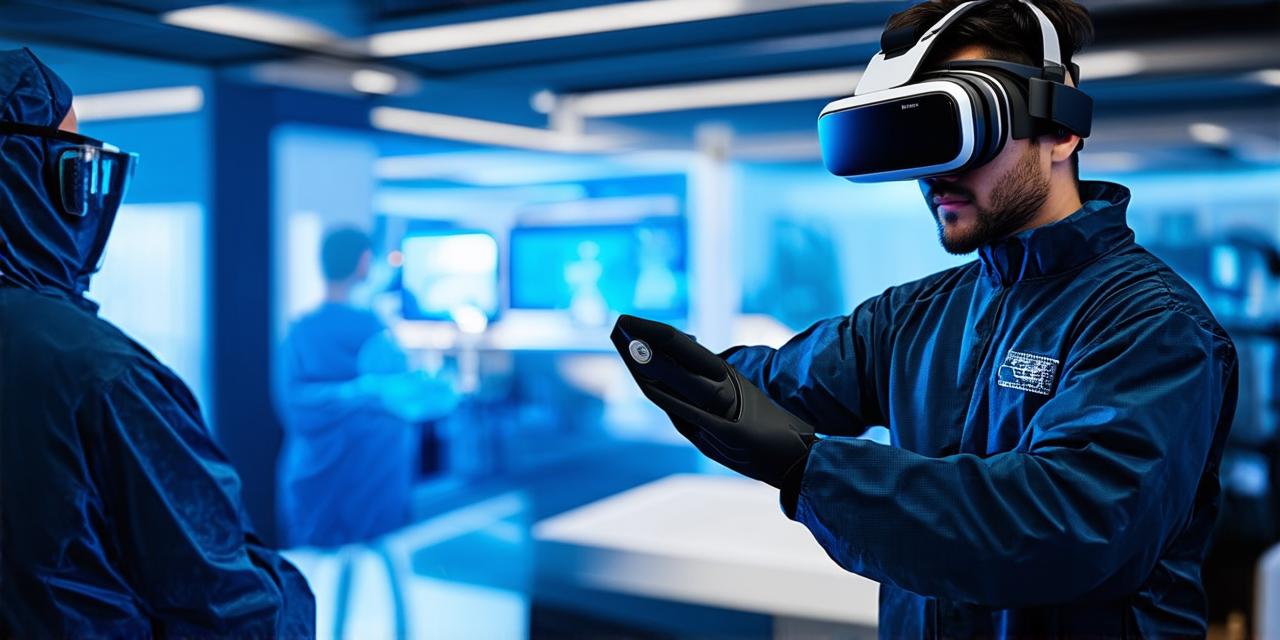
Virtual reality (VR) is a burgeoning technology that has the potential to revolutionize the field of medicine in the coming years. By creating immersive and interactive environments that simulate real-world experiences, VR can help doctors and patients alike by providing new ways to diagnose, treat, and prevent illnesses. In this article, we will explore some of the ways that VR is being used in healthcare today, as well as what the future might hold for this exciting field.
One of the main advantages of using VR in healthcare is its ability to provide a safe and controlled environment for medical procedures. For example, VR can be used to train surgeons and other medical professionals on complex procedures that would be difficult or impossible to practice in real life. By simulating these procedures in a virtual environment, doctors can gain the necessary experience and skills to perform them more effectively in the operating room. This can lead to better patient outcomes and reduced risks associated with surgery.
Another way that VR is being used in healthcare is through telemedicine. By using VR, doctors can remotely diagnose and treat patients from anywhere in the world. This is particularly useful for patients who live in remote areas or who have difficulty traveling to see a doctor in person. With VR, patients can receive high-quality medical care without ever leaving their homes. For example, a patient with a skin condition could have a virtual consultation with a dermatologist and receive treatment advice without having to physically visit the clinic.
In addition to its use in training and telemedicine, VR is also being used to treat a variety of illnesses and conditions. For example, VR can be used to simulate exposure to triggering stimuli for patients with anxiety disorders or PTSD. By gradually exposing patients to these stimuli in a controlled virtual environment, doctors can help them overcome their fears and improve their mental health. This can be particularly useful for patients who do not respond well to traditional talk therapy or other forms of treatment.
VR is also being used to treat physical conditions such as chronic pain and arthritis. By using VR, patients can receive pain relief through distraction techniques or by simply immersing themselves in a virtual environment that takes their mind off of their pain. This can be particularly useful for patients who do not respond well to traditional pain management methods. For example, a patient with chronic back pain could use VR to simulate walking on a beach and distract themselves from the pain while also getting some exercise.
Despite its many benefits, there are still some challenges to overcome when it comes to using VR in healthcare. One of the main challenges is the cost of equipment and software. VR systems can be expensive to purchase and maintain, which can make them difficult for hospitals and clinics to afford. In addition, there is a lack of standardization when it comes to VR technology, which can make it difficult for doctors and other medical professionals to compare different systems and choose the best one for their needs. This can lead to incompatible equipment and software, making it hard to implement VR in healthcare settings.
Despite these challenges, the potential benefits of using VR in healthcare are enormous. By providing new ways to diagnose, treat, and prevent illnesses, VR has the potential to transform the way we approach healthcare in the coming years. As technology continues to evolve, it is likely that we will see even more innovative uses for VR in healthcare in the future. For example, VR could be used to simulate surgical procedures on patients with rare diseases or conditions, allowing doctors to practice and perfect their techniques before performing them on real patients.
One example of this is the use of VR in rehabilitation therapy. By using VR, patients can receive physical therapy in a virtual environment that simulates real-world movements and activities. This can be particularly useful for patients who have difficulty performing physical exercises in a traditional gym setting. For instance, a patient with a spinal cord injury could use VR to simulate walking on a treadmill and gradually build up their strength and balance without the risk of falling.
Another area where VR is being used in healthcare is in medical training. Medical students can use VR to simulate surgeries and other medical procedures, allowing them to practice their skills in a safe environment before performing them on real patients. This can lead to better patient outcomes and reduced risks associated with surgery. For example, a medical student could use VR to simulate a laparoscopic surgery and practice their skills before performing the procedure on a real patient.
In conclusion, virtual reality has the potential to revolutionize healthcare in the coming years by providing new ways to diagnose, treat, and prevent illnesses. Despite some challenges, the benefits of using VR in healthcare are enormous and will likely lead to innovative uses for this exciting technology in the future. As technology continues to evolve, we can expect to see even more applications of VR in healthcare, leading to better patient outcomes and improved quality of care.
